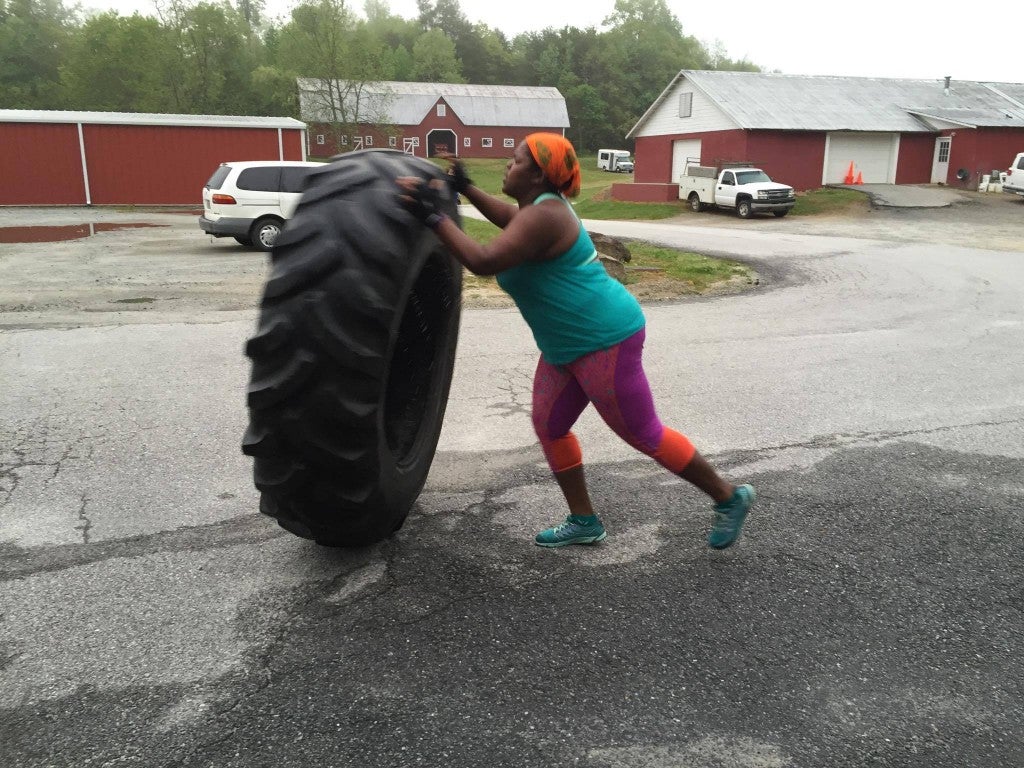10 Tips To Successfully Train For An Obstacle Race

If you’ve been following my social media at all, you’ll know that that I’ve been preparing like crazy over the past few months for the Merrell Tough Mudder in Atlanta.
Well, this past weekend I did it! I emerged from the mud alive, even after having the wind knocked out of me THREE TIMES at the “Electroshock Therapy” obstacle at the very end. I am pretty sore, but I feel GREAT.
Throughout my training, I noticed that the single biggest benefit to all of the preparations I made for this epic obstacle course race (OCR) experience was that it made my running exponentially better.
Here’s how we did it:
My training partner, Rebecca, and I started with a very solid running base, with several long runs in the mix. Being able to start our training from a place other than ground zero was extremely helpful.
- We started out with three different full-body strength workouts using only medium-weight dumbbells. The weights were light enough to get 8-10 reps out of them, but heavy enough to cause us to alter our form if we tried to do too many. (3 days/week)
- After about two weeks, we modified our program. Each strength-training day would now be devoted to a muscle group: legs and glutes on one day, arm and core on another, and back and shoulders on the last day. The weights got heavier and the reps decreased.
- Each day we strength-trained we worked on pull-ups. Neither of us can do an unassisted pull-up but we tried earnestly every single workout. We practiced hanging for time, hanging with knee raises, and then finally did some assisted pull-ups about four weeks out.
- We ran a lot. Short runs, long runs (10+ miles), and interval runs. We ran on the track, on the road, and on trails. I also ran on the treadmill, which as you know I LOVE! (No sarcasm intended here. I really do love the ‘mill!)
- The other thing we did was to warm up with lots of bodyweight exercises: squats, lunges, speed-skaters, step-ups, push-ups, planks, mountain climbers, and the dreaded burpees.
- Sometimes we did two-a-days with strength training in the morning and running or hiking in the afternoon.
- We flipped a big old tractor tire around-the perfect exercise for grip strength, all the benefits of the dead-lift, explosive strength and so many other things.
- We did farmer walks for grip-strength, upper-back-strength, and core strength, and general cardiovascular fitness.
- We did partner carries, and many of them. If there’s one exercise that will strengthen your legs, it is this. Being able to carry someone that has jumped on your back over a distance is pretty incredible.
- Three weeks out, we did an EPIC workout that included 20x800M on the track, with a different bodyweight exercise done in three sets between each interval. We then tapered for the event, running a bit more, continuing hanging practice and decreasing our reps.
We arrived at the course ready, healthy, and strong. Even though I did not manage to complete every single obstacle (Rebecca was an absolute beast, though!), we both persevered and managed to finish, with the help of others on the course.
I hope that you’ll consider doing and obstacle course event. If you need to change things up in your routine, or if you’re dealing with some running-specific overuse injuries, you may want to sign up for an OCR. You’ll be surprised at the tremendous gift of power and stability you’ll give yourself from simply working hard at functional but explosive strength.
GO MUDDERS!
Read More:
5 Tips For Conquering Obstacle Races
Obstacle Race Training Plan
